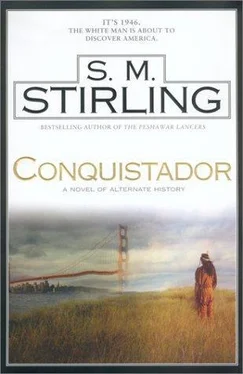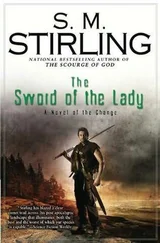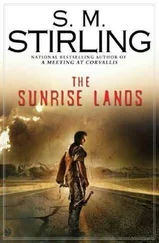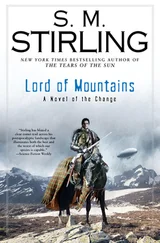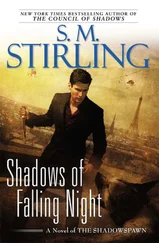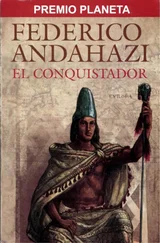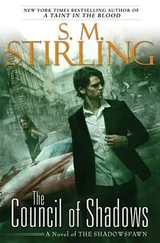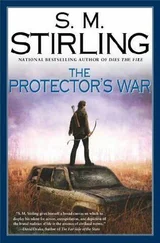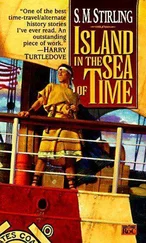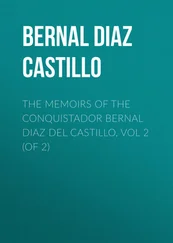Motto: “We Fight for Our Friends.”
Morrison
Domain: Lower Salinas
Motto: “Down Styphon!”
Sanders
Domain: Upper Salinas
Sulgrave
Domain: Russian River valley
Motto: “Fortune Is Bald Behind.”
Ball
Domain: Orange County
Motto: “Pick Your Man and Aim Low.”
Fairfield
Domain: San Leandro (south of Alan Fitzmortons)
Motto: “By This Right.”
Fest
Domain: Ventura; northern Oxnard
Motto: “Winter Isn’t Coming.”
Barklay
Domain: inland Santa Ynez valley, around Solvang
Motto: “How Shall One Fight a Hundred?”
Wyans
Domain: inland Santa Maria valley, around Sisquoc
Motto: “Westward the Course of Empire.”
Devereaux
Domain: Paso Robles area
Motto: “Pour Dieu et la Patrie.”
Batyushkov
Domain: Santa Cruz, Pajaro Valley
Motto: “Za Nas!”
Some Collaterals:
Di Montevarichi—collaterals of the Rob Fitzmorton line; relatives of his wife.
Tuscan nobility.
APPENDIX TWO
Pocahontas and the Rolfes of Virginia
In our history, John Rolfe (1585-1622) married the woman nicknamed Pocahontas, whose real name was Matoaka. She was the daughter of the Powhatan chieftain Wahunsonacock, and married Rolfe on April 5, 1614, ensuring peace between the powerful Powhatan confederacy and the struggling English colony at Jamestown for eight more years.
That probably ensured the survival of the first English foothold on North American soil—without that breathing space, it might well have suffered the fate of the earlier “lost colony” at Roanoke, with unguessable consequences for the history of the Americas. Rolfe was also responsible for introducing the already-popular West Indian variety of tobacco to Virginia, sparking the colony’s first boom and putting it, for the first time, on a sound economic footing.
Matoaka, christened as Lady Rebecca at her baptism, gave birth to one son, Thomas, in 1615. In 1616 the colony sponsored a voyage to England for the Rolfes, where Lady Rebecca was given a wildly enthusiastic reception, and Virginia gained invaluable publicity. It was badly needed, for while Virginia was beginning to acquire a reputation as a place where an ambitious man could get rich, for most of the newcomers it was a charnel house. In these decades the average life expectancy of an English settler in Virginia was less than two years; tens of thousands died in the Chesapeake swamps—of malaria, dysentery, Indian arrows, hunger, scurvy, overwork and sheer heartbreak. Not until around 1700 would births outnumber deaths among the English settlers in Virginia, nearly three generations after the foundation of Jamestown.
Lady Rebecca died on her way back to Virginia in the year 1617; like so many of her compatriots, she contracted some European disease, probably smallpox—one of the many maladies to which the long-isolated Amerindians were fatally vulnerable. John Rolfe went on to become a member of the Governor’s Council and a successful tobacco planter, before being killed at Berkeley Hundred in the surprise Indian attack which began the Powhatan-English war of 1622. His son Thomas inherited his lands and prospered, but the Rolfe name became extinct in the next generation. Through his daughter, however, Thomas—and the Powhatan chieftains—became ancestors of virtually all the First Families of Virginia; Robert E. Lee, for example, was among their descendants; so was Thomas Jefferson’s wife.
In the very slightly different history of Conquistador, Lady Rebecca did not contract her fatal disease; she lived until 1622, when she shared her husband’s fate at the hands of her furious countrymen. She also bore two more sons, John and Samuel—and from them derived the long line of the Rolfes of Virginia. Few made any great mark on history; they were typical of their time and class: horsemen and hunters, owners of plantations and slaves, and growers of tobacco and wheat and corn. Some served on the Governor’s Council; others led the colony’s militia in time of war. They shared the declining fortunes of the Virginian gentry as the nineteenth century wore on, and lost the last of their wealth in the convulsions of the Civil War and Reconstruction.
None shook the earth… until John Rolfe VI, fresh from the Pacific Theatre of World War Two, started fiddling with a shortwave set one April in 1946….
APPENDIX THREE
A Brief Overview and Ethnography of the Post-Alexandrian World
When Alexander did not die in 323 B.C.E., the history of the world and its peoples turned down an entirely new track.
After recovering from his illness, Alexander spent several years consolidating his vast conquests, and pressing forward with his policy of Graeco-Iranian synthesis and Greek colonization. In 320 B.C.E., the Greek cities of Sicily and southern Italy, pressed by the Carthaginians and Italics, appealed to Alexander, and a new round of conquests began….
Alexander the Great died in August of 280 B.C.E., in the summer capital of Ecbatanta, in the Zagros mountains. He was succeeded by his son Alexander II (by the Bactrian-Persian princess Roxanne), and his dynasty remained in power for a further century and a half. By that time, the empire ruled from Babylon (renamed, of course, Alexandria) stretched from Iberia to the Ganges delta. After roughly A.D. 0, it began to decline and eventually fissured into a maze of quarrelsome city-states and regional kingdoms; by about A.D. 300 the last pretence of political unity was gone. Its ghost continued to haunt men’s minds for many generations, and “Alexandros” became alternate title for Zeus, and the term for “ruler” as well.
Twenty-two hundred years after his death, the heritage of the Conqueror still marked the world. Since the Alexandrian empire had been so much larger than Rome’s, its legacy was more widespread; half the 600 million or so human beings on Earth in the early twenty-first century spoke languages derived from Greek, in much the same way as French, Spanish and so forth are derived from Latin. The post-Alexandrian linguistic/cultural zone encompassed the whole Mediterranean basin, the Balkans as far north as the Carpathians, Egypt, Ethiopia, the Near East including Anatolia and the Caucasus, parts of the southern Ukraine, most of the settled part of Central Asia (plus Iran-Afghanistan), and northern India all the way from Pakistan to Bengal.
Technologically, the post-Greek zone was the most advanced part of the world prior to the opening of the Gate in 1946; the level is roughly late-medieval, and has shown little change for many centuries. Paper and printing are known, but gunpowder is not.
Languages and peoples
Arabic is limited to the southern coast of Arabia, and to spots along the East African coast. Most of sub-Saharan Africa is much as it was in our timeline in the Renaissance period, with a huge and obvious exception: no Islam or Christianity. Tribal statelets or ancephalous societies cover most of the continent, with some substantial kingdoms in the savannah of West Africa; those have been profoundly influenced by the neo-Greek states of North Africa via the trans-Saharan trade routes. The South Arabian civilizations have been influential down the east coast.
Southern India is inhabited by Dravidian-speaking Hindus who use Sanskrit as a liturgical language, but they have been heavily influenced by Greek culture. Southeast Asia is mostly Hindu but speaks Austronesian-Malaysian languages, except for a Han kingdom in what is northern Vietnam and southeastern China in our timeline.
Читать дальше
